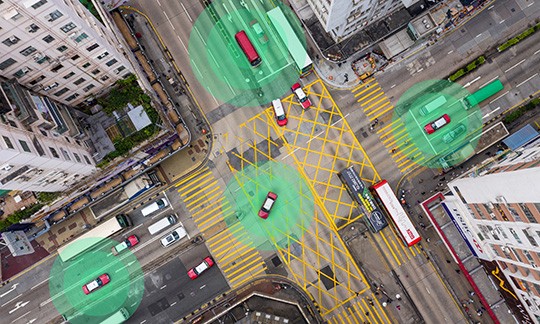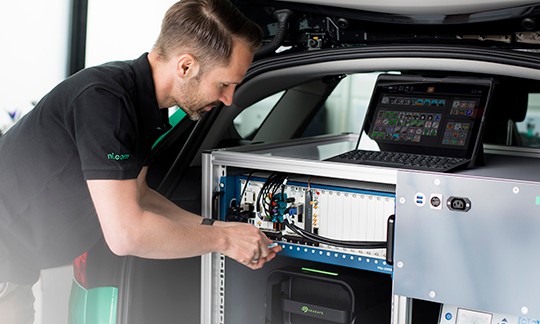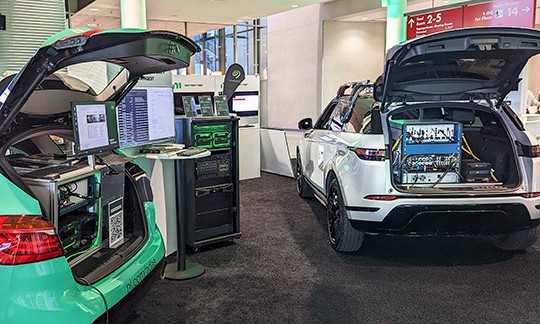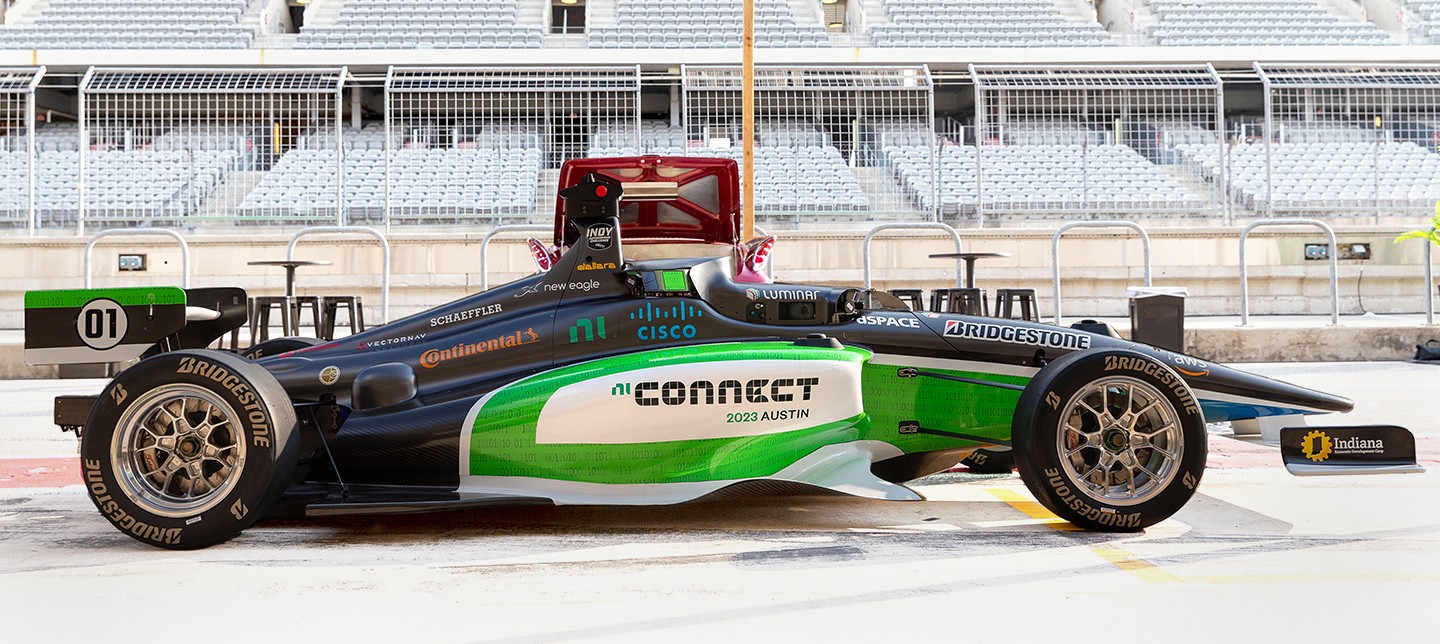
NI and the IAC Collaborate to Accelerate Autonomous Technology
CUSTOMER STORY
TRANSPORTATION | 7 MINUTE READ
NI is teaming up with the Indy Autonomous Challenge to boost highway safety and shape the future of mobility through innovation and talent development.
AUTHOR: Brenda Vargas, Senior Solutions Marketing Manager, Transportation, NI
Many vehicles on the road today feature advanced driver assistance systems (ADAS) to prevent accidents. Automatic emergency braking, blind spot detection, and parking assistance are just a few examples of how ADAS fills the gaps of human limitations and miscalculations. However, ADAS features are stepping stones to a fully autonomous driving (AD) environment. In fact, completely autonomous robotaxis and delivery vehicles are already in service in cities across the United States.
However, AD is not standard yet. Besides regulatory, infrastructure, and economic factors that must be reconciled, automotive manufacturers and OEMs must perform extensive testing to ensure that ADAS and AD technologies are more reliable and safer than human drivers.
To bring AD adoption closer to reality, NI and the Indy Autonomous Challenge (IAC) are shaping the future of mobility through technology and talent development. Let’s take a look at how these organizations are cultivating the next generation of industry leaders and accelerating ADAS and AD innovation.
The IAC Creates Real-Life Value on the Racetrack
The IAC organizes fully autonomous racing competitions and facilitates the design of the official racecar, the Dallara AV-21. The program pulls together a unique collaboration among industry players, government institutions, and academia to further autonomous driving research and technologies.
Nine student teams from 16 universities globally compete with their own official racecar. The autonomous hardware systems on each racecar are developed and maintained by the IAC with support from leading industry suppliers like NI. The uniqueness and performance of each car ride on the software and algorithms or “AI driver” developed by the student teams. They spend months remotely developing and testing their AD software.
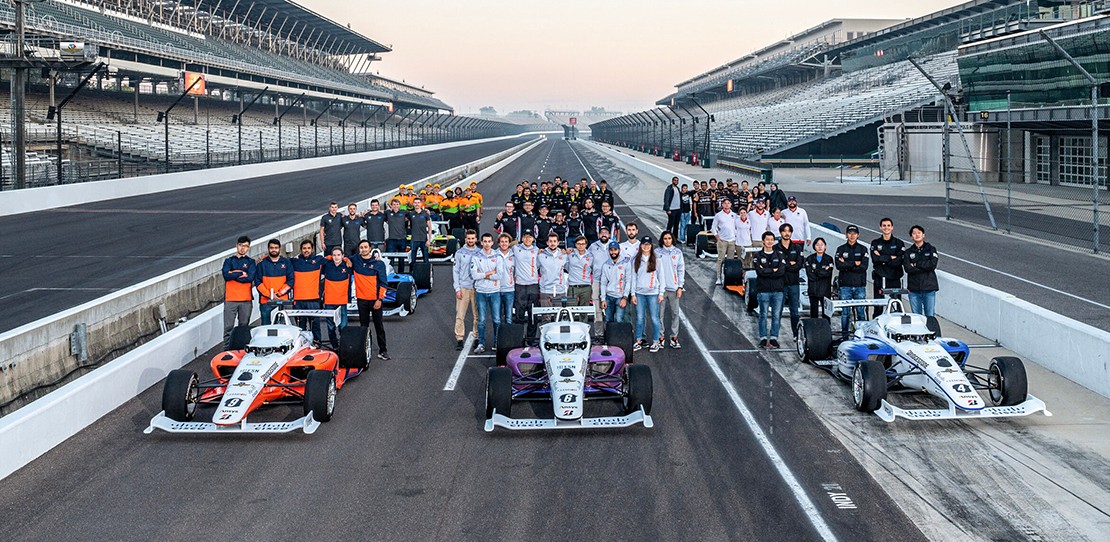
The Challenge culminates in an exhilarating live competition. Previous races have occurred at the Indianapolis Motor Speedway, the Las Vegas Motor Speedway, and the Monza Circuit in Milan, Italy.
While the teams compete for bragging rights and the more than one million dollars in prize money that has been awarded to date, the IAC program enables game-changing technological advancements and far-reaching benefits for the autonomous vehicle (AV) industry.
Solving Edge-Case Scenarios
Auto racing presents extreme parameters. Autonomous racecars must avoid collisions and unanticipated obstacles while maintaining control at high speeds, up to 180 miles per hour. By navigating various auto-racing scenarios, AD capabilities for “edge cases” on city streets and highways can be proven out.
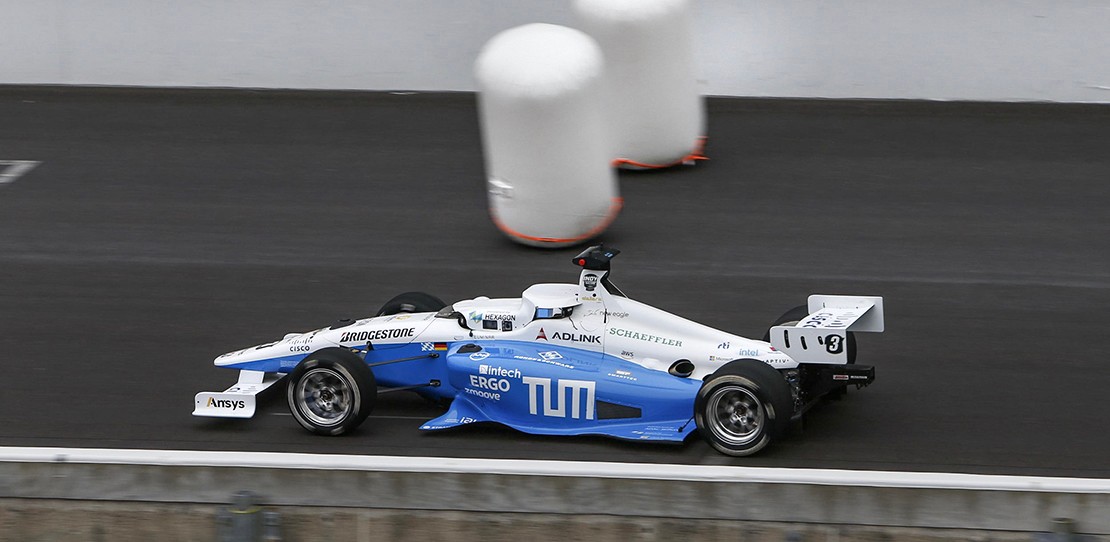
Fueling Talent and Innovation
The competitive environment fuels rapid experimentation and innovation. Each year, more than 200 PhD students, master’s students, and faculty members explore sensor fusion and driving algorithms to build the best autonomous racing software. This program is nurturing the next generation of talented engineers and accelerating emerging technology.
Driving Public Trust
As the IAC gains traction and publicity, the organization expects to grow public confidence and acceptance of self-driving technologies. Today, many people are still skeptical about autonomous driving. In time, increased exposure and understanding will drive adoption and trust.
The program is doing far more than furthering self-driving technologies and boosting highway safety. It is paving the future by incubating an army of AV innovators and showing the public the continuously expanding limits of ADAS.
Navigating Limitations
Since the first live race in 2021, the IAC has provided tools and resources for the student teams. Students spend months developing their autonomous driving software before they have access to their official racecar, which they receive about one month prior to the competition. During that period, the students’ ability to simulate complex scenarios and fine-tune their sensor fusion and algorithms is limited.
Up to that point, teams develop software without precisely understanding the impacts of weather conditions, sensor synchronization, and the complete integration of software and hardware.
The inability to identify issues early in the software development process hinders rapid innovation and prevents teams from optimizing their solutions. In addition, lessons learned by testing with a real vehicle on the track are expensive and time consuming.
Testing real-world scenarios without real-world consequences and costs is where innovative testing technologies and corporate sponsorships come into play.
Advancing Autonomous Technology with Hardware-in-the-Loop Testing
Hardware in the loop (HIL) is a simulation and testing methodology used in developing and testing complex systems. HIL tests hardware systems in a real-time simulation environment, where the physical hardware interacts with the software.
HIL is often used in industries where it is crucial to thoroughly test systems before deployment, like aerospace, automotive, and defense. Numerous benefits result when manual, live tests are replaced with HIL testing.
Safety, Safety, Safety
HIL testing enhances the safety of the actual test environment and the safety of the final product. In an HIL environment, the system can be pushed to its limits without endangering lives.
Accuracy and Control
An HIL approach allows engineers to test the hardware in a controlled environment where they can easily change parameters and observe the system’s behavior. Scenarios can be accurately reproduced while keeping other variables constant, which is almost impossible in real-world testing. Errors are caught, adjustments are made, and tests are duplicated to verify results.
Quicker Results at a Lower Cost
HIL testing enables engineers to systematically test the hardware without the risks and costs associated with live testing. Tests can easily be automated and repeated, reducing manual intervention. Prototype wear and tear is reduced when engineers can pinpoint and troubleshoot issues more quickly—and without an actual collision on the track.
NI’s Exclusive HIL Sponsorship
The IAC chose NI as its exclusive HIL sponsor because NI is a decades-long industry leader in test automation and HIL testing. As a Member Sponsor, NI provides test engineering expertise and HIL equipment.
As part of this sponsorship, an engineer from NI’s Leadership Accelerator Program (LAP) works full-time with the IAC and university teams to develop specifications for the HIL system, design the testing workflows, provide training on NI’s platform, and collaborate on improvements for efficiency and precision. Additionally, technical mentors from NI ensure the program is well-supported.
The donation of NI’s HIL equipment enables the student teams to bring their autonomous driving algorithms from theory to reality. By proactively verifying if algorithms are behaving as expected in the test lab, student teams can catch errors and avoid collisions on the racetrack.
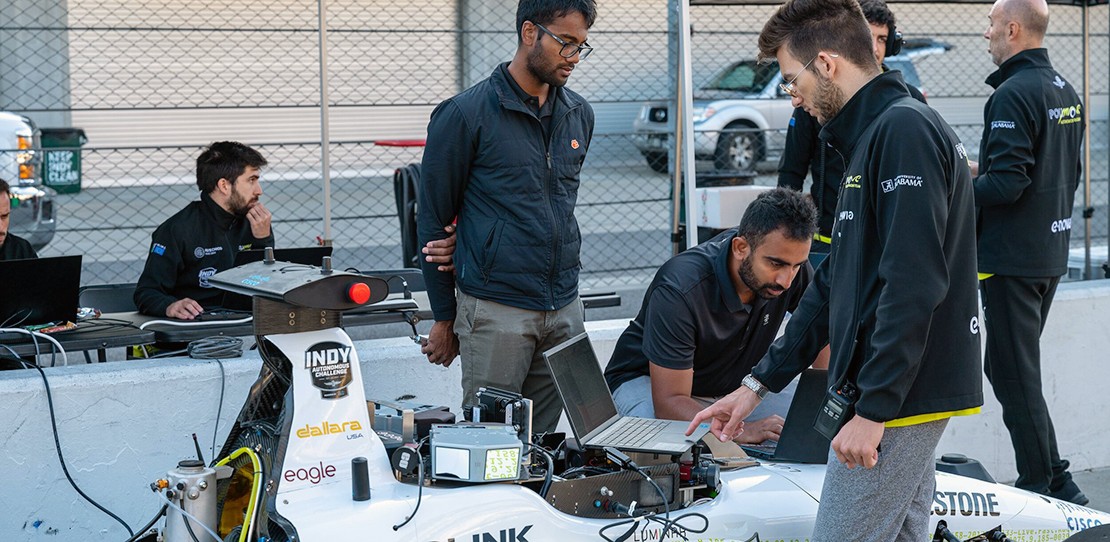
NI’s cutting-edge HIL offering is allowing student teams to innovate in an undefined space with flexibility, openness, and uniformity.
Flexible
ADAS systems comprise intricate algorithms, multiple sensors, such as radar, lidar, GNSS, and cameras, and electronic control units (ECUs). NI’s infrastructure and HIL solutions allow for the integrated testing of ADAS components under various scenarios. The modular PXI platform, a key component of NI’s HIL solution, is future-proof and easily customized, enabling users to seamlessly plug in and orchestrate various inputs.
Open
NI’s HIL test solutions promote openness and innovation. Teams can make customizations, use open-source code, and integrate third-party components and software. This feature alleviates interoperability challenges as technology evolves and enables creativity.
Unified
The IAC teams are constantly analyzing data and test results to drive improvements in their AD software. NI’s HIL test solutions work harmoniously in a unified language, so teams can digest the data and adjust quickly.
Paving the Future
While the IAC provides the stage to push the limits of autonomous technologies, sponsors like NI provide the tools and guidance needed to deliver performance. Together, all the participating organizations are paving the future of autonomous mobility by fostering an environment where young professionals can experiment, learn, and innovate.
The thrilling fusion of academic excellence, cutting-edge industry technology, hands-on experience, and real-world applications are igniting a wave of groundbreaking innovations and propelling us closer to the future of autonomous driving.
